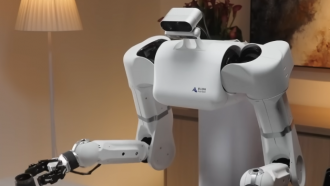The US Department of Defense has recently revealed an ambitious plan to develop a vast network of AI-powered technology, drones, and autonomous systems to counter evolving military threats posed by China and other adversaries by 2025, The Wall Street Journal reports.
Kathleen Hicks, the Deputy Secretary of Defense, disclosed the comprehensive strategy during a speech in Arlington, Virginia, highlighting the urgency of keeping pace with China's rapidly expanding military capabilities.
The Pentagon's vision involves investing hundreds of millions of dollars in creating thousands of air-, land-, and sea-based artificial intelligence systems designed to be "small, smart, and cheap."
These autonomous systems, leveraging renewable resources like solar power, will be equipped with advanced sensors to provide real-time information, ensuring swift and efficient responses to emerging threats.
AI-Powered Defense Arsenal
The heart of this initiative lies in deploying autonomous systems using artificial intelligence to detect and engage enemy targets.
These include self-piloting air- and sea-based drones, ground-based logistics systems, space-based assets, and systems designed to defend against incoming missiles.
The Pentagon's plan aims to match and potentially surpass China's growing investment in autonomous and teaming systems.
To illustrate the potential, Hicks painted a picture of "distributed pods of self-propelled [autonomous] systems afloat, powered by the sun and other virtually limitless resources."
This ambitious approach aims to provide new, reliable real-time information sources, enhancing the US's strategic advantage in the modern battlefield.
The Replicator Initiative
Hicks also shed light on the "Replicator" initiative, which was announced by the Pentagon last week. While the specifics were initially scarce, her speech provided essential details about the program's objectives.
The Defense Department intends to deploy thousands of these advanced AI systems, further bolstering the US's military capabilities.
Funding for the Replicator initiative will come from existing sources, with the latest Pentagon budget request earmarking $1.8 billion for artificial intelligence in fiscal year 2024.
According to a report in the Japan Times, instead of deploying a small number of vulnerable US warships and aircraft in high-tension waters near Taiwan and China, the US will be able to deploy a large number of drones.
Countering China's Advancements
The urgency behind the Pentagon's plan is driven, in part, by China's remarkable military developments. China boasts a larger navy than the United States and has actively invested in autonomous systems.
A Pentagon report from 2022 noted China's "growing numbers of autonomous and teaming systems" and their efforts to develop swarming capabilities.
China's Response to the AI Race
On the other side of the globe, China is making strides in artificial intelligence, with a particular focus on generative AI, aiming for the likes of ChatGPT.
Nikkei Asia reports that several tech giants, including ByteDance, Baidu, and SenseTime, have recently launched their chatbots to the public after obtaining regulatory approval.
These efforts reflect China's pursuit of dominance in generative AI, a field that has already seen significant development in the US and Europe.
Compared to their Western counterparts, Chinese companies are currently restricted in offering their generative AI services to a limited number of users until they receive approval for wider public use.
Stay posted here at Tech Times.
Related Article: China's Internet Giant Tencent Set to Unveil Its Own AI Chatbot






